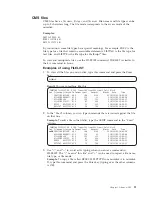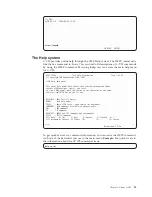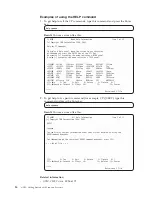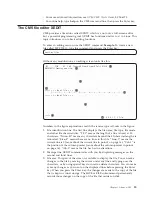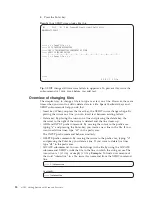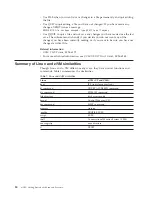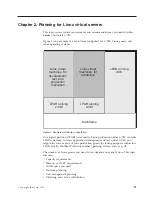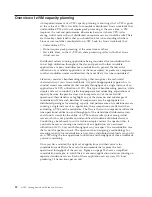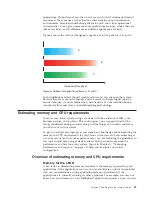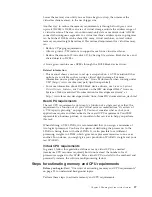
applications. This pattern shows the worst-case, in which all workloads demand
resources at the same time, rather than the characteristics of most production
environments. Workload distribution patterns B and C show truer operational
characteristics: at any given moment, some applications are busy while others are
idle or less busy; and at different times, different applications are busy.
Figure 6 shows the relative throughput capacity of each of patterns A, B, and C.
Such distributions reflect the real world and place far less stress on the system
because they are more cache-friendly and can result in sharply higher capacity
results. Likewise, if your workload has characteristics of a skewed distribution,
incorporate this aspect into your benchmarking methodology.
Estimating memory and CPU requirements
In most cases, initial system sizings are done with the assistance of IBM, your
business partner, or consultant. This section gives you an appreciation for the
things considered during an initial sizing and the things you should consider as
you add work to your system.
To get you started, this topic gives you some basic knowledge about estimating the
memory and CPU requirements for your Linux virtual servers. Such estimating is
not an exact science and your experience may vary, but following the guidelines in
this topic should help you get started, after which you need to measure the
performance and fine tune your system. Topics in Chapter 11, “Monitoring
performance and capacity,” on page 117 help you fine-tune your initial
configuration.
Overview of estimating memory and CPU requirements
Memory for the LPAR
A key factor in determining memory resources is the memory required for your
applications. If the applications are new, you must estimate or start at some initial
size; you can determine existing application memory requirements if the
applications are currently running on other platforms. For example, you may not
know how much memory a new WebSphere
®
application requires, so you can start
A
Increasing throughput
B
C
Figure 6. Relative throughput for patterns A, B, and C
Chapter 2. Planning for Linux virtual servers
25
Summary of Contents for ZVM - FOR LINUX V6 RELEASE 1
Page 1: ...z VM Getting Started with Linux on System z version 6 release 1 SC24 6194 00...
Page 2: ......
Page 3: ...z VM Getting Started with Linux on System z version 6 release 1 SC24 6194 00...
Page 10: ...viii z VM Getting Started with Linux on System z...
Page 12: ...x z VM Getting Started with Linux on System z...
Page 14: ...xii z VM Getting Started with Linux on System z...
Page 64: ...50 z VM Getting Started with Linux on System z...
Page 76: ...62 z VM Getting Started with Linux on System z...
Page 80: ...66 z VM Getting Started with Linux on System z...
Page 156: ...142 z VM Getting Started with Linux on System z...
Page 160: ...146 z VM Getting Started with Linux on System z...
Page 162: ...148 z VM Getting Started with Linux on System z...
Page 166: ...152 z VM Getting Started with Linux on System z...
Page 170: ...156 z VM Getting Started with Linux on System z...
Page 171: ......
Page 172: ...Program Number 5741 A07 Printed in USA SC24 6194 00...

